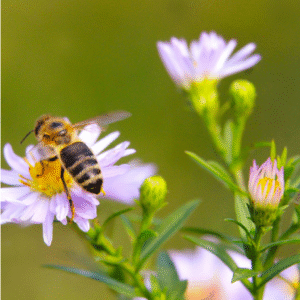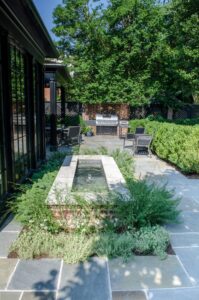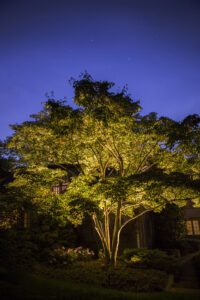By Samantha Wright
It is freezing cold outside, there are no leaves on the trees and not a flower in sight. Yet you see our gardeners in your landscape, looking up in the trees pruning with extended poles. Later in the day, our heads are in the shrubs continuing pruning. What is the point, is this really the right time? In the middle of winter? Do not be fooled by the cold! There is still a lot of work to be done before spring comes. Winter work is extremely important to a healthy and beautiful landscape for the coming seasons. For many reasons, winter is the best season to get a lot of pruning work done.

Most deciduous plants (trees or shrubs that drop their leaves in autumn) respond extremely well to winter pruning. In the growing seasons many deciduous plants will “bleed” where a cut was made. Meaning they will draw and lose copious amounts of sap to the cut or wound. This is a significant part of the plant’s healing process and uses a lot of energy. Pruning while the plant is in dormancy (temporarily inactive or minimal growing activity) ensures the plant saves energy that could have been taxed by pruning during the growing season. This saved energy is now transferred into new and healthy growth when spring arrives. Pruning at the wrong time can kill large sections of the plant and in extreme situations, will kill the entire plant.

Along with saving energy by the plant being dormant, winter is giving us the most ideal weather conditions to prevent spread of pests and disease. High heat and humidity are how many pests and diseases thrive. Boxwood blight being a great example. A fungal disease that is extremely contagious and untreatable. It thrives and spreads rapidly in warm, humid climates. In winter, we have those low temperatures and most days low humidity. The chances of spreading persistent pests and unwanted disease are now much lower.

To keep it simple, pruning is general training or manipulating of the plant to give an ideal shape and promoting healthy growth. No matter the type of plant, pruning is a common necessity for longevity. The 4 D’s are the first to go. The 4 D’s include pruning the dead, diseased, dying, or damaged. If not treated or removed, these branches will continue wasting the plants energy and will likely get worse. As we go into the winter months, plants are now dormant and without leaves. This beautifully displays the plants structure making it an ideal time to see any of those unwanted branches. Some things we look at remove are crossing or rubbing branches, which can cause warped growth and future damage. Suckers, a vigorous vertical growth which will suck the sap from the plant. Finally, crowded areas need thinning to provide light and air flow. Removing those types of branches mentioned ensures that we have a strong and healthy structure to continue growing for years to come.
Although it is winter, a Gardeners’ work is far from over! If it has been awhile since some pruning has been performed, take a step back and look at that bare tree or shrub. I am sure you will find one of those 4 D’s or unsightly growth that needs attention. There’s always gardening to be done before spring has even to begun to sprung. It is all about timing. Below is a list of some trees and shrubs that would benefit from winter pruning.
Trees: Amelanchiers -Red Buds -Oaks -Cherries -Plums -Poplar -Sumacs -Spruce -Junipers -Bald Cypress
Shrubs: Boxwood -Barberries -Euonymus -Viburnums -Weigelias
If you are inexperienced with pruning or have questions, please contact a Planted Earth Professional!




